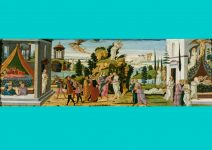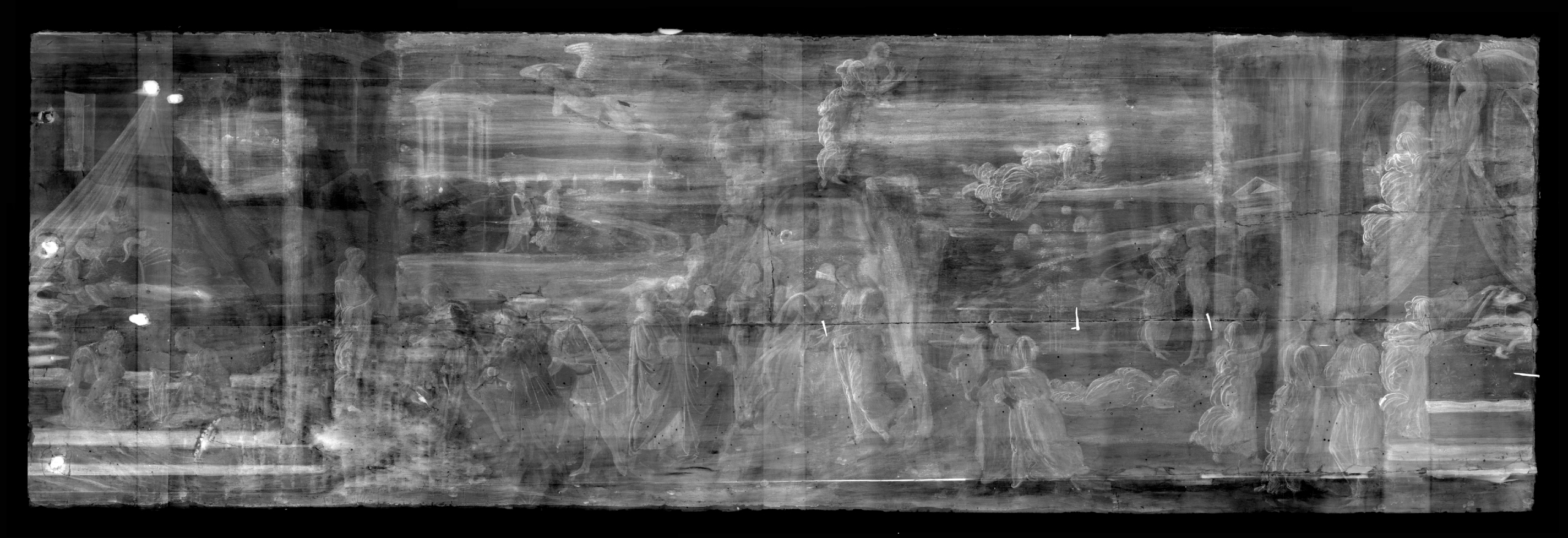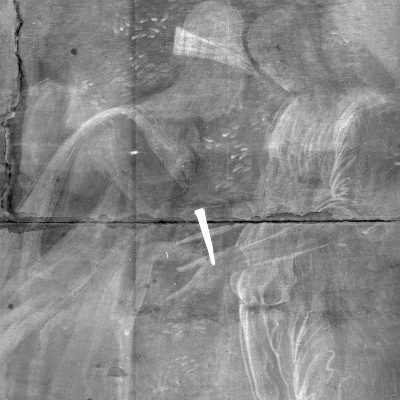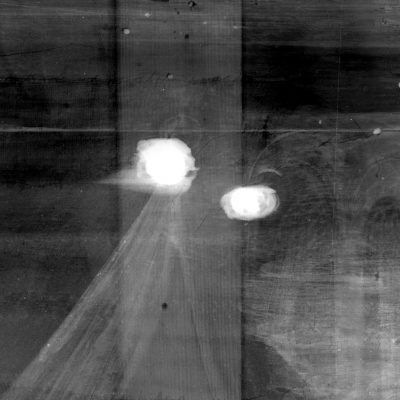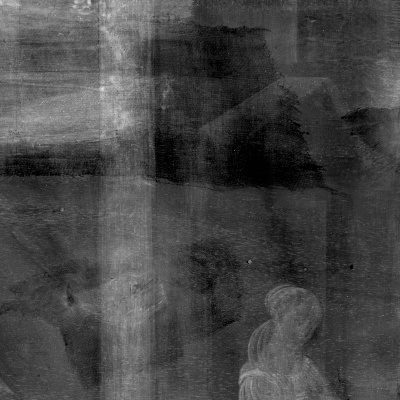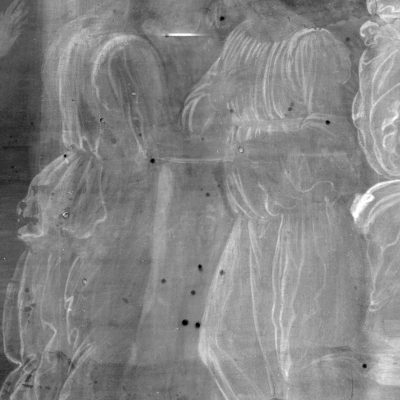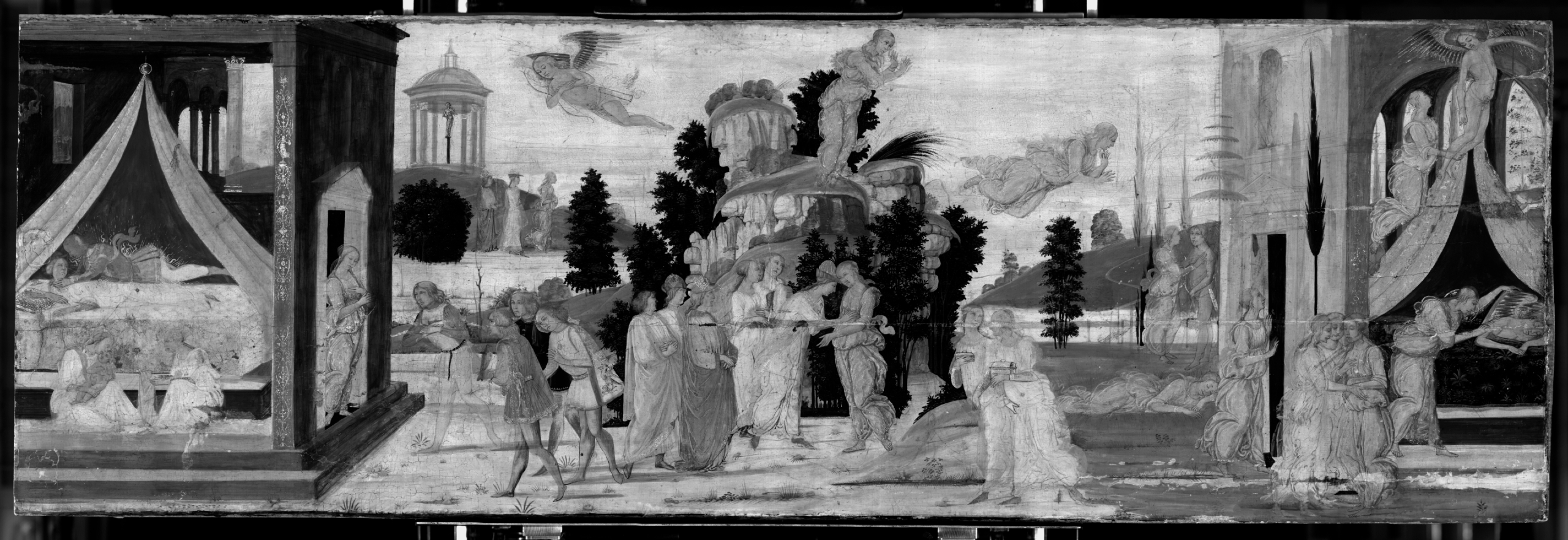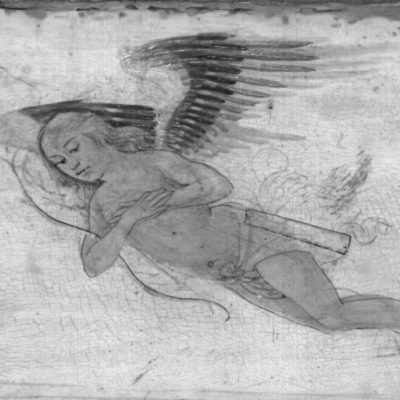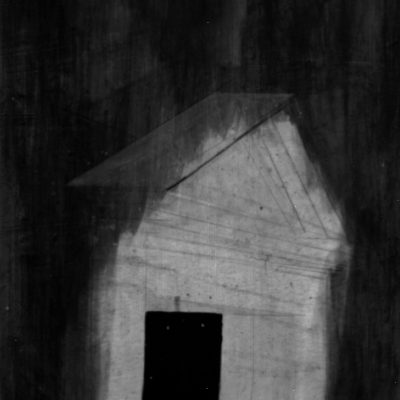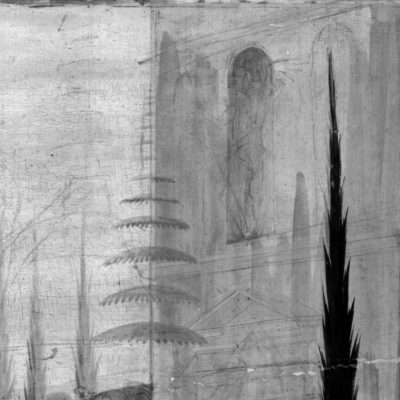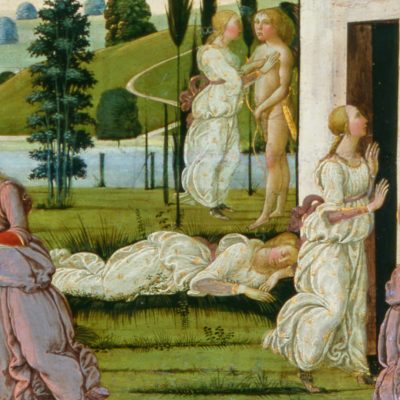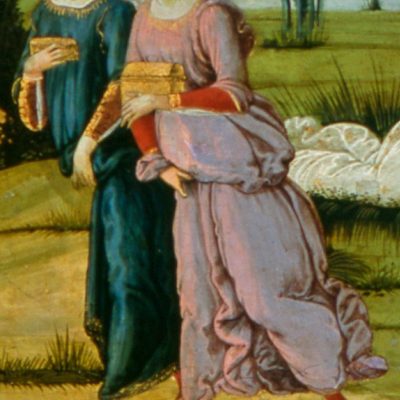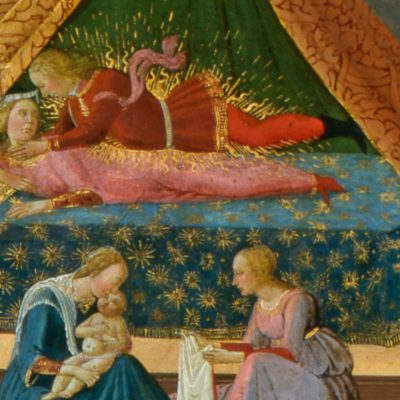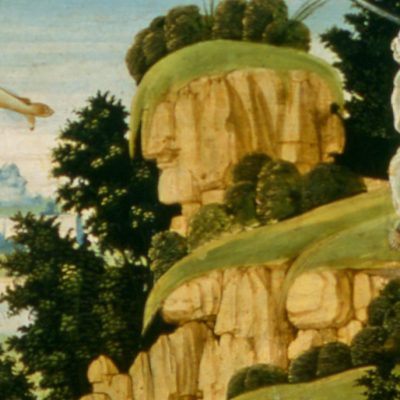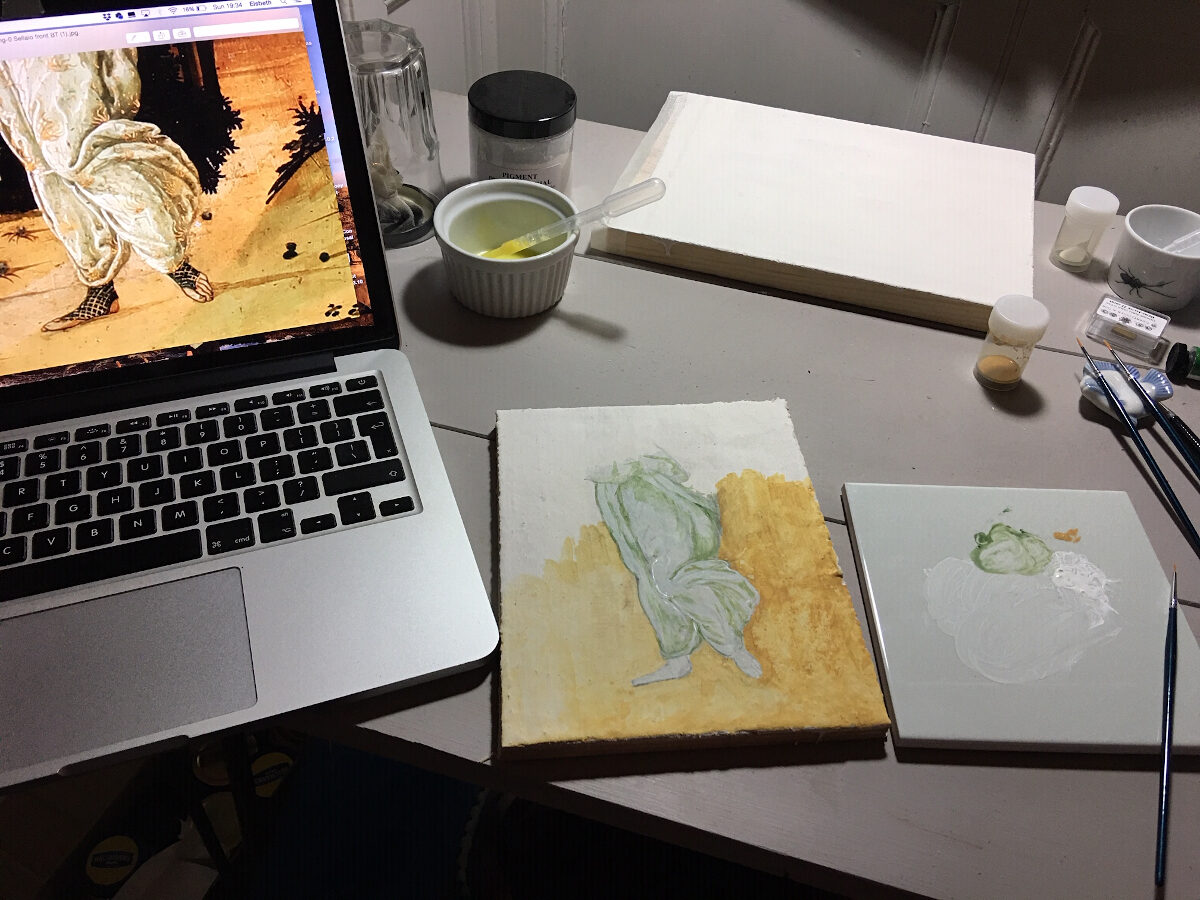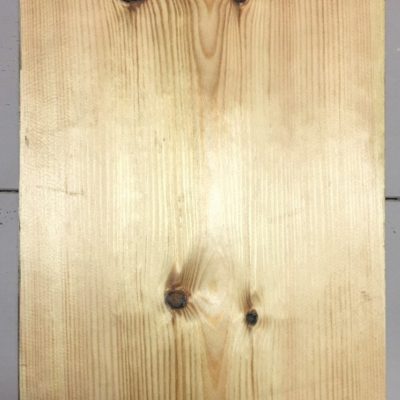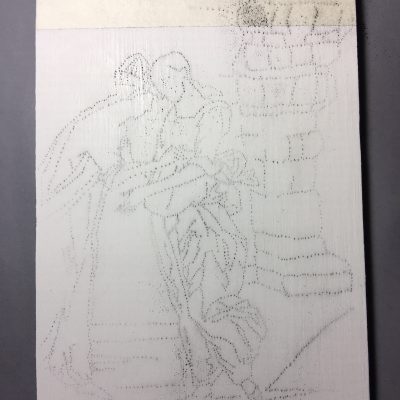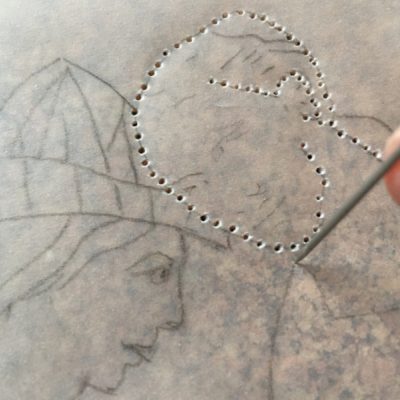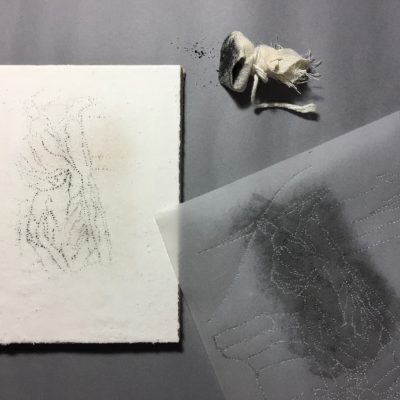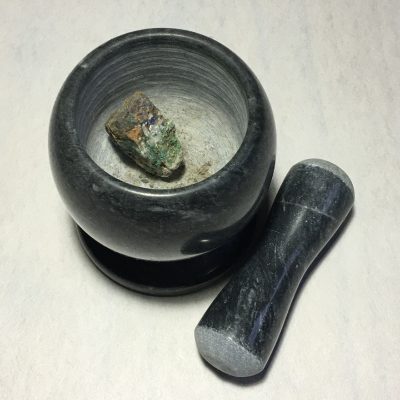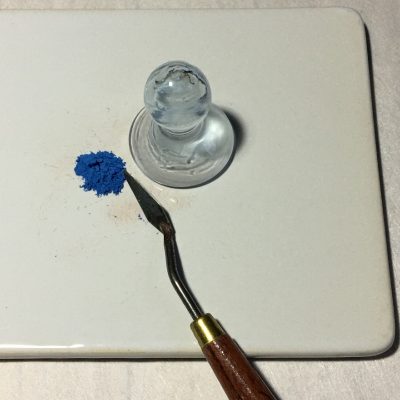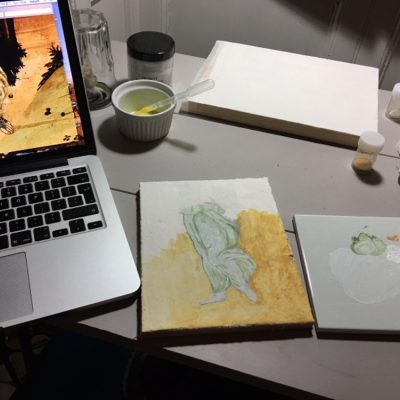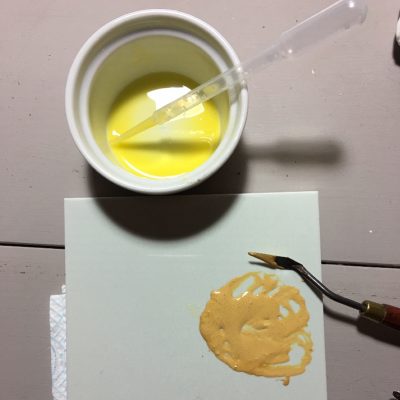1. Planning our project and looking closely
Cupid and Psyche was painted in about 1473 and tells the first half of the ancient Greek story of a human princess, Psyche, who marries the god of love, Cupid. We selected the artwork for further research and to be part of the Fitzwilliam's Inspire project as we knew that visitors love the artwork and it's story.
It was painted for a grand bedroom in fifteenth-century Florence, which doubled as an entertaining space for the wife’s friends. The bedchamber was furnished at the time of a wedding, with a bed and chests but also painted stories that celebrated the love of a newly married couple.
The story highlights the loyalty of the bride to the groom, as was expected in the fifteenth century.
Have a look at the painting below.
Spend 5 minutes noting down what you can see.
What can you work out just by looking at it?

Cupid and Psyche by Jacopo del Sellaio
Who are the main characters?
How does the artist show us this?
What do you think is happening in the painting?
What are the key moments?
What do you think made us select this artwork for the Inspire2020 project and exhibition?
Write down your thoughts.
What would you want to find out about this painting?
Reading the painting
You can read the story in this painting from left to right, like a cartoon strip. Artists in the 1400s were very influenced by classical art which often has stories depicted in this way on the side of Greek vases or sarcophagi - such as in the example below.
Cupid is sent to cast a spell on Psyche by his mother, Venus, who is jealous of Psyche’s beauty. Cupid falls in love with Psyche and is unable to carry out Venus’ evil plan. Psyche is blown off the top of a mountain by the god Zephyr who carries her safely down to rest in a soft bower. When she awakes, she finds herself at a beautiful palace where she is welcomed by an invisible, but kind, master (Cupid, hiding from his mother). He invites Psyche to live with him on the condition that she will never ask his true identity. They are happy for a while but then Psyche’s sisters persuade her to look at him whilst he sleeps. A drop of oil lands on his skin, he wakes up and is angered by Psyche’s lack of trust.
The story continues in a second panel (in a private collection). Cupid returns to his mother, Psyche searches for him and is captured and enslaved by Venus. Cupid pleads with Jupiter, king of the gods, to free Psyche. He agrees and Cupid and Psyche are married.
This method of visual storytelling is called continuous narrative.
Can you spot the main characters?
Look for people who appear repeatedly.
The woman in white is Psyche.
The flying angel is Cupid.
The woman in purple is Psyche's sister.
You can track Psyche's appearances through the painting to see how the story develops.

